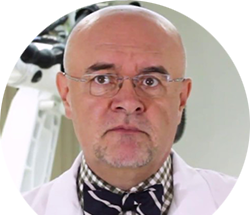Prof. Branislav Jeremić
Prof. Branislav Jeremić
University Hospital in Kragujevac
Title: What HPV+ status brings to the treatment of HNC?

Abstract
The last three decades provided new insights into the discovery of the entity related to several strains of human papillomavirus (HPV). The viral cause of HPV, primarily found in the oropharynx, was officially recognized by the World Health Organization in 2007. While epidemiologic studies around the world showed an increased incidence of HPV-related heads and neck cancers (HNC), they also established a photo robot of a typical person suffering from HPV: younger white man, suffering from a nonkeratinized type of squamous cell carcinoma, rarely being seen as heavy smoker and/or drinker. The patient with specific sexual behavior pattern usually carried low T and high N burden, HPV16 being detected in the vast majority of HPV+ tumors, mostly in the oropharynx. It was also recognized that HPV-related cancers seem to have a better prognosis than their HPV-unrelated counterparts. This observation served as an important starting point for clinical studies aiming first to identify different risk groups and then to design various de-intensification treatment strategies which aimed to maintain high success rate with e.g. lower radiotherapy and/or chemotherapy doses while decreasing side effects such deintensified treatment strategies should bring.
Biography
Dr. Branislav Jeremic, from the University Hospital in Kragujevac, Serbia has 35+ years of experience in clinical science and research in various countries worldwide. His major clinical interests include lung cancer, head and neck cancer, brain tumors and palliative radiotherapy. He had designed and executed as PI more than 30 clinical trials, mostly focusing on altered fractionated regimens with and without concurrent chemotherapy. He published 195 full-length papers, 14 editorials and 36 letters to the editor in peer reviewed publications in major journals worldwide. He is the editor of the first ever book on stereotactic radiotherapy of optic sheath meningiomas and is the editor of seminal book on Advances in Radiation Oncology of Lung Cancer, its third edition appearing in late 2023. He is recipient of many leading fellowships and is a frequent guest lecturer at many conferences and meetings worldwide (ASTRO, IASLC…) as well as visiting professor at major universities and institutions worldwide (Harvard University, Mayo Clinic, Thomas Jefferson University…). He is a member of Academy of Sciences of South Africa (ASSAf). He was also a Radiation Oncologist responsible for the Eastern Europe, Southeast Asia and Africa at the International Atomic Energy Agency in Vienna where he shared The Nobel Peace Prize in 2005.
